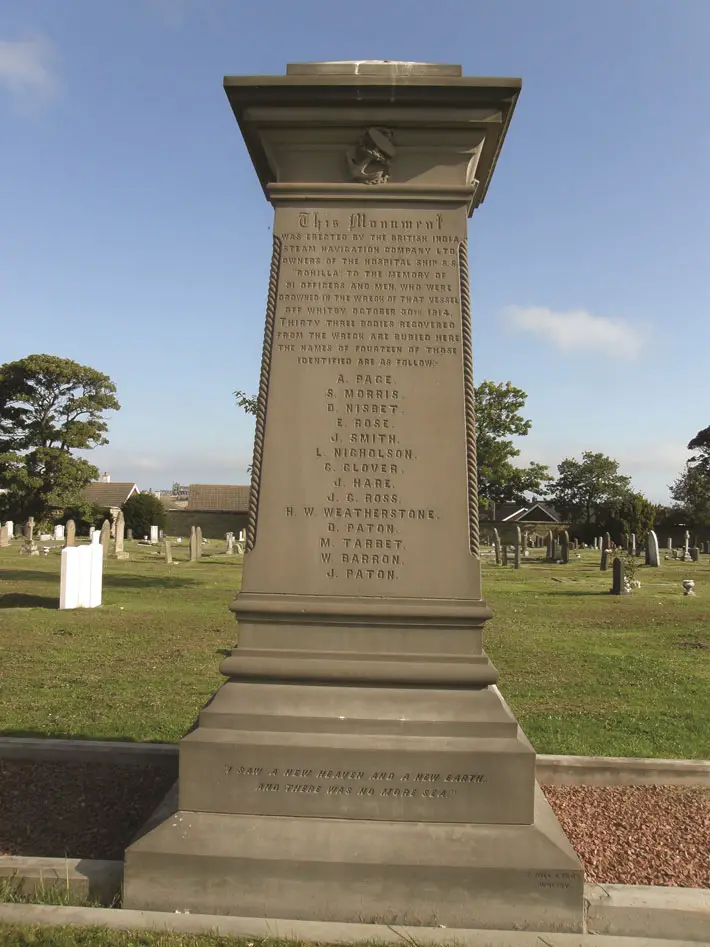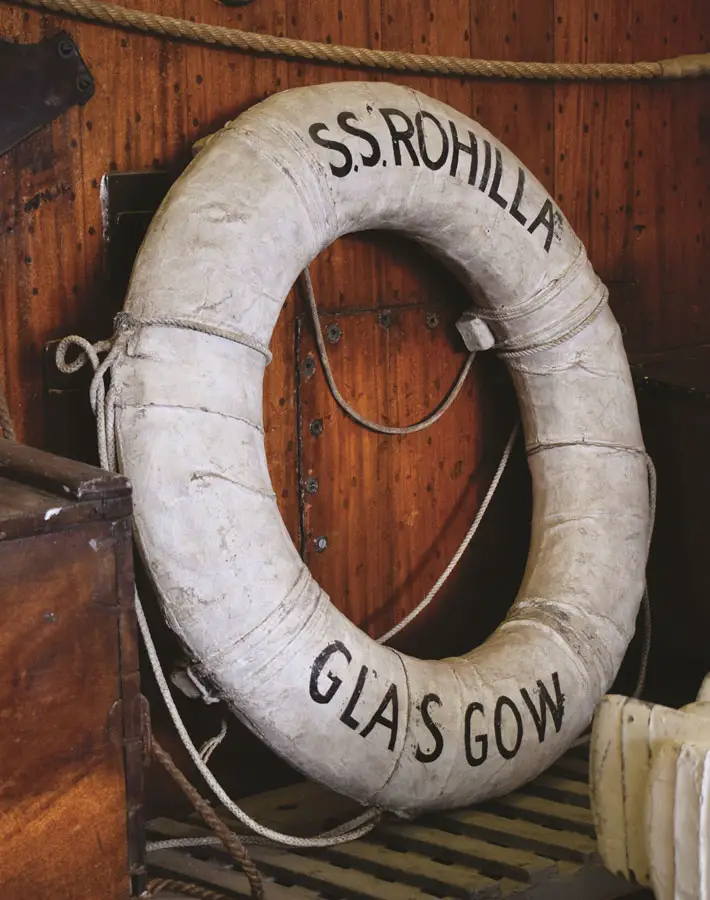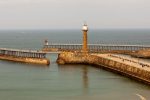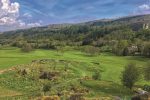The Story of the Wreck of the Rohilla in Whitby
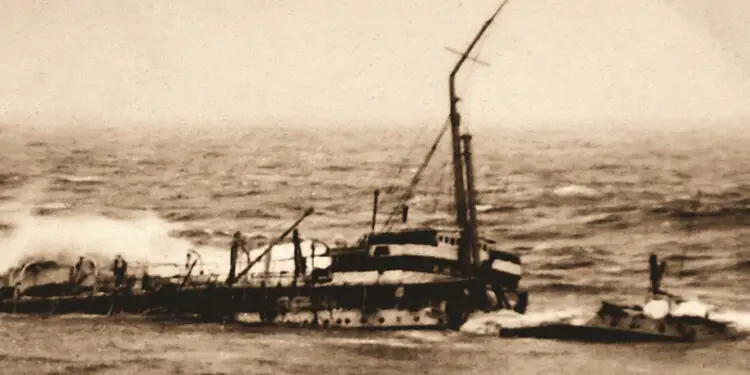
The Rohilla was a 7,400-ton hospital ship driven ashore and wrecked during a fierce storm on 30 October 1914. The monument remembering those who were lost was erected in 1917 in Whitby cemetery.
The Rohilla was owned by the British India Navigation Co. and had been used to take troops and passengers to and from India until it was commandeered for the war effort and converted to a hospital ship.
On board as well as the crew were doctors and nurses all ready to use the newly fitted operating theatres to help wounded soldiers.
“Swept away”
During the storm the ship was forced onto rocks near Whitby at Saltwick. Distress signals brought out the lifeboat crew, who quickly realised the raging storm made it impossible to leave the harbour and row around the headland.
To reach the ship the crew carried the lifeboat through the gap between the east pier and the cliffs and along the shore until they were opposite the wreck.
One of the ship’s lifeboats made it to the shore, but lost the oars on the way; others were swept away in the storm. Some tried to swim, but not all were strong enough to make it.
“Becoming desperate”
The Whitby lifeboat men managed to make two trips before the incoming tide made it too dangerous. Help was needed and calls were made for powered lifeboats to assist.
To the north the Tees boat set out but was not able to battle against the winds. The next day a steam trawler tried to manoeuvre close to wreck but the raging sea could not be beaten.
 By the third day things were becoming desperate: most supplies had been lost when the ship was broken up and those still on board had little food or water left.
By the third day things were becoming desperate: most supplies had been lost when the ship was broken up and those still on board had little food or water left.
“Calm the waves”
Fortunately the North Shields motor lifeboat arrived, poured oil on the water to calm the waves and managed to take off fifty survivors.
The ship had sailed with 229 on board and 146 survived. Among the survivors was Mary Roberts, who a few years earlier had been on board the Titanic.
Article taken from ‘Whitby in 50 Buildings’ by Colin Wilkinson, published by Amberley Publishing, £15.99 paperback
